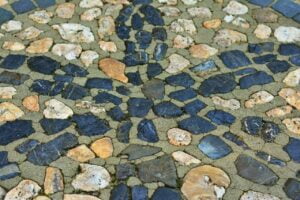Natural Stone Flooring Types: A Comprehensive Guide
Natural stone has been a popular choice for flooring for millennia, offering durability, elegance, and a timeless aesthetic. The beauty of natural stone lies in its unique characteristics, with each piece being distinct in pattern, color, and texture. Here, we delve into the various types of natural stone flooring, providing insights into their properties and potential applications.
1. Granite:
- Description: Granite is an igneous rock, famed for its durability and resistance to scratches. Its crystalline structure gives it a speckled appearance.
- Uses: Ideal for kitchens, bathrooms, and high-traffic areas.
- Benefits: Heat-resistant, scratch-resistant, and available in a variety of colors.
2. Marble:
- Description: Marble is a metamorphic rock with distinctive veining and is available in a myriad of colors.
- Uses: Favored for luxurious interiors, it’s perfect for hallways, bathrooms, and living rooms.
- Benefits: Offers a refined elegance and is great for creating intricate designs.
3. Limestone:
- Description: Limestone is a sedimentary rock that comes in neutral tones, often featuring fossilized patterns.
- Uses: Suitable for bathrooms, kitchens, and outdoor patios.
- Benefits: Provides a rustic appearance and is versatile in design.
4. Travertine:
- Description: A type of limestone deposited by mineral springs, travertine often has a porous structure.
- Uses: Popular for bathrooms, kitchens, and outdoor areas.
- Benefits: Offers a natural, earthy appearance and is available in several finishes.
5. Slate:
- Description: Slate is a metamorphic rock known for its fine grain and layered appearance.
- Uses: Suitable for both indoor and outdoor flooring.
- Benefits: Slip-resistant, durable, and available in dark, rich colors.
6. Sandstone:
- Description: As the name suggests, sandstone is made up of compressed sand particles and often showcases wavy patterns.
- Uses: Commonly used for patios, decks, and other outdoor spaces.
- Benefits: Provides a warm and natural appearance with good grip.
7. Quartzite:
- Description: A metamorphic rock derived from sandstone, quartzite is both hard and glossy.
- Uses: Perfect for interiors, especially in areas where a touch of luxury is desired.
- Benefits: Resistant to wear and tear and available in shimmering tones.
8. Soapstone:
- Description: A talc-rich stone, soapstone is soft to touch and often comes in grayish-blue tones.
- Uses: Ideal for countertops and certain flooring applications.
- Benefits: Non-porous, stain-resistant, and offers a unique, soft texture.
Conclusion:
Natural stone flooring is a testament to the marvels of Mother Nature. Each stone type offers its own set of benefits, colors, and textures, making it possible to find the perfect match for any design aesthetic. When selecting a natural stone for your floor, consider factors like the intended usage, maintenance requirements, and overall design goals to ensure you pick the stone that fits best with your vision.


